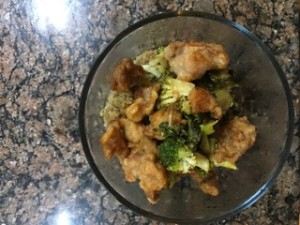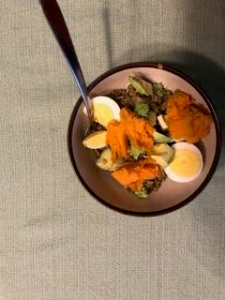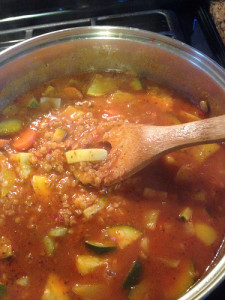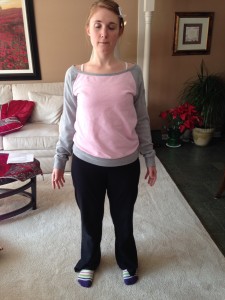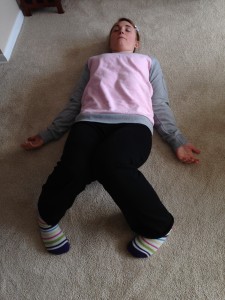I have been refining this collection of information for over 10 years, it began as my thesis on Chinese Medicine and the seasons and then one day at the beach the idea to incorporate yoga with the seasons and meridians hit me. It seems everyone I talk to about the concepts of Chinese Medicine asks where can I read a book about all of this. I’ve never found one that I felt was a simple introduction to the concepts of acupuncture that a lay person could understand and use in their daily life.
It is my intention for this ongoing class to be a way to learn and understand these concepts not only intellectually but also as an experience that can be applied to your daily life.
The ancient doctors’ job of their community was keeping people healthy; if someone got sick they had to pay their patient because they had not done their job correctly. This system was born out of prevention, to sustain a healthy life to the age of 100. It is also a system based on observation because of this it is easy to find contradictions because teachers may have made conflicting observations and passed those on to their students. They honored all ways of practicing as each way served a purpose or had a value even if a different or better way was later discovered. Sometimes these are simply cultural. For example, in China they prefer thicker gauged needles and they manipulate the needles until a strong sensation is felt, in Japan thin gauged needles are barely inserted into the skin, Korean acupuncture uses a hand system, some acupuncturists prefer to only use a method of acupuncture in the ear. The most fascinating part is that all of these systems work and it is also why acupuncture can be so hard to do clinical controlled studies on because they may think they are doing sham acupuncture when they may just be using an unknown system.
With that being said the idea and concepts discussed should never be taken at face value. They are simply points to consider. It’s up to you to be your own advocate in your body and find what makes you feel most whole. Not all ideas will work at all times and each season will be different just like we have mild winters and long winters. Some days are rainy or sunny or foggy. Taking on small bits of information and making small changes over time can add up to a lifestyle of wellness.
In school whether its grade school, high school, college etc. we study the body by systems. When do we put all of these systems back together to understand how the body functions as a whole?
Do we understand what a whole, healthy body feels like?
The body has the amazing capacity not only to maintain homeostasis but to remain in the present moment. What most people might not understand is how choices impact this. For example, the body’s ph is 7.34 and no matter what we do it will strive to stay here as long as we are alive. For example, if you drink a coke which is very acidic (somewhere around a 2) the body will compensate to keep homeostasis by leaching calcium out of the bones. One coke might not change the body, however, overtime all of that compensation could lead to many problems from muscle cramping to osteoporosis.
So how do we find balance in our lives? Perhaps we should learn a lesson from our bodies. In order to maintain homeostasis in the moment the body compensates after drinking that coke and borrows some calcium. It doesn’t consider the detrimental effect this loss of calcium will have long term- it is trying to survive in the present moment. The easy answer then is, if we stay present in this moment, the future is planned for.
Let’s talk about balance. What does the concept of balance look like to you? Perhaps an image of a judicial scale comes to mind. This idea is very static and rigid, life most times is not. I’d like for you to consider the idea of harmony. This concept is more fluid. The idea of Chinese Medicine is that each system supports the next and they all work together to keep the body healthy.
If a disharmony occurs it doesn’t happen in isolation to one organ system- the entire body is impacted, emotions are impacted, the individual’s life and all those a part of it are impacted. Kind of like that saying, “If mom’s not happy, ain’t no body happy.” To find harmony we need to look at what caused the dis-harmony. As the body becomes healthier all areas become healthier. It’s a domino effect in the right direction.
So where do we start? With awareness. A teacher once told me, awareness precedes change. First we have to know how we feel, what we are doing and then we can make changes if necessary. Small, realistic changes over time have the deepest impact and longest results.
Take some time to think about your day from turning the alarm clock off, showering, eating breakfast (if you ate breakfast), driving to work, tending to your family, phone calls, emails, going to the bathroom etc etc. As you are thinking about your day notice your body, notice your breath. How does your life feel in your body? How is your body compromising to maintain homeostasis? Are you bracing your body with tight muscles? Holding your breath?
You might imagine how over time this un-awareness of how your body manages your day can contribute to disharmony in the body, in relationships, in the very activities that we enjoy.
With that in mind, could you use a little more energy to use during your day?
In Chinese Medicine it is believed we get our energy from 2 places: our parents and our lifestyle. There’s not much we can do about our parents. The rest of the equation we have a little more control over. Da Qi + Gu Qi = Zhen Qi. What in the world does that mean? How you breathe and how/what you eat contributes to how much usable energy you have and how good you feel.
Da Qi: The Breath
The yogis believed we have a certain number of breaths to live, so they practice slow, deep, mindful breathing. An easy way to shut off fight/flight (stress!) is to exhale deeper than your inhale. This will not only calm you it will help tone your abdominal muscles strengthening your core and lower back in addition to taking stress off of the neck and shoulders. When you can, take a moment to check in with your breathing or take one or two deep breaths for a quick time out in the middle of a stress filled moment. You might end your day with some deep breaths as well to drift off into more restful sleep.
Breath is the mirror of the mind. Here are some examples of what happens to our breath on a day to day basis:
- Fear- gasping for air
- Resisting something- hold the breath
- Anger- short jerky, incomplete breaths
- Fatigue- long inhales through the mouth. Yawn
For optimal health, breathing should be performed nasally and should be full and rhythmic. The breath should come in through the nose and out through the nose. The nose is anatomically designed to filter and warm the air for the lungs, therefore try to use it as nature intended.
Gu Qi: Food
There are gobs of information on what you should and shouldn’t be eating. Alot of it can be confusing as many ideas are contradictory. One thing just about everyone agrees on is that Twinkies will never be a “superfood”. I tell my patients to eat food that is alive. Anything that can live longer than you can on a shelf try to avoid. The best thing you can do when you eat, whatever it is that you eat is to eat with awareness. Don’t multitask when you eat! The spleen/stomach controls digestion and is damaged by overthinking. If you are answering emails while munching you could be setting yourself up for digestive problems, period issues, obsessive thinking and not to mention overeating.
Zhen Qi= True Energy
Your true energy is the combination of your genetics and your lifestyle (air and food). TCM believes that your lifestyle is most important of these two forces because it is constantly being replenished. Our genes are our genes but our role in what we eat, how we breathe and move can have a huge impact on what genes manifest. Due to the changes in our environment each season our lifestyle can modify to adjust accordingly. There is a time to expend energy and a time to conserve. When we follow the flow of nature our bodies can function most optimally.
The gist of TCM is to keep harmony in the body by keeping the circulation of blood and energy flowing unimpeded. When blockages happen this causes the body to not be able to function as optimally as it can which can eventually affect every part of the body. Acupuncture can be a gateway to awareness. It literally forces you to be still for a while. After treatments most people feel better, “cleaned out,” energized and relaxed. With this new awareness they naturally start to make other changes in how they respond to situations that used to “stress them out.”
A bit about what acupuncture feels like
Many people are surprised how painless acupuncture is. Occasionally you might feel a quick pinch or electrical sensation that you might think about longer than you actually feel, this sensation is called “da qi” and basically means we woke up some stagnation and got energy flowing there again. If anything feels uncomfortable for longer than 30 seconds or so ask for needles to be adjusted. Once needles are in, your body may feel heavy/weighed down or light/floating or both sensations at once. Sometimes awareness can rest on a couple of needles like they are “talking” to each other and then change to another group of needles, sometimes you might swear there is a needle where you know there is not, we call this a phantom needle. It is opening up a pathway. Sometimes acupuncture points can feel really achy or itchy, this is all within the realm of normal and will subside during the treatment. A treatment can make some sleepy and others alert, the needles are tapping into your body’s healing resources for what is needed now. Each treatment can be a different experience. Because acupuncture addresses the body as a whole positive “side effects” can include more energy, better quality sleep, improved digestion and a more even mood.
When acupuncture is practiced in a group setting the effects are magnified. This happens because of entrainment. Basically everyone is on the same wave length and so deeper relaxation can occur. My teacher once said that needles are like antennas pulling universal qi/energy into the body. When a group receives acupuncture together more energy is harnessed.
A bit on yoga
The systems of Yoga and Traditional Chinese Medicine are very similar, sometimes referred to as sister medicine with the Himalayan Mountains being their only divide. In the West we have picked a part these systems and taken pieces when in actuality they are both parts of bigger systems. While we won’t get into all of the specifics of these systems I wanted to address the nature of the yoga postures that will be demonstrated/preformed in class. There are over 84,000 yoga postures and chances are there will be some that just about any body can do. I choose to find postures that are simple and effective in nature so that you can feel confident in developing a home practice free of injury or over thinking. Looking like a picture of a yogi on a beach in a pretzel like posture is not necessary to receive the benefits of this practice. Whether you’ve never done yoga or you have been practicing for a long time it is my hope that you will find these sequences of postures for each season beneficial. Postures should be comfortable to get in and out of, free of pain that you can easily breathe through. Yoga means to unite the breath with the body so it is essential that we breathe during our postures to receive the intended benefit of each pose. It is often said if you’re not breathing, you’re not doing yoga.
Each yogapuncture class includes a short lecture on Chinese medicine and how it relates to what is happening environmentally/seasonally. Yoga postures are tailored to the current season and are accessible to beginning and seasoned students. Class ends with a seasonal acupuncture treatment.
Winter is the time of Kidney/Urinary Bladder system, the emotion of fear and coldness. We will explore these concepts with restorative postures to fortify our constitution, build endurance, peace and will power during this time of inner reflection, reverence and rest.
Spring is the time of Liver/Gall Bladder system, the emotion of anger and wind. We will discuss spring cleaning/cleanses, anger and courage.
Summer is the time of the Heart/Small Intestine system, the emotion of joy and heat. We will discuss how to harness the abundant energy of the season and how to not “burn the candle at both ends.”
Late Summer is the time of the Spleen/Stomach system, the emotion of worry and dampness. The spleen/stomach is related to all times of transition/transformation and is present in each season.
Autumn is the time of the Lung/Large Intestine system, the emotion of grief and dryness. This is a period of starting to turn inward.
Each seasonal self care class is unique!
